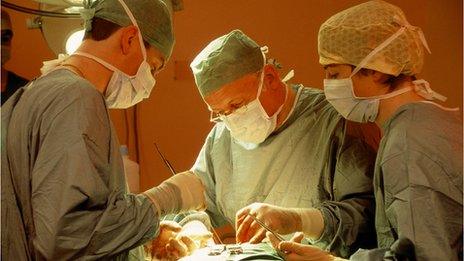Star Trek-style 'tractor beam' created at university
- Published

Tractor beams had previously been more common in science fiction programmes like Star Trek
Scientists at Dundee University have created a working "tractor beam".
Normally the stuff of science fiction in Star Trek or Star Wars, physicists at the university used an ultrasound array to exert force on an object and pull it towards the energy source.
They say it is the first time such a beam has been used to move anything bigger than microscopic targets.
The technology could be put to use in medicine, helping to develop ultrasound-based clinical techniques.
Dundee researchers worked alongside colleagues in Southampton and Illinois on the project, the results of which have been published in the scientific journal Physical Review Letters, external.
In another sci-fi inspired project, the same team from the university's Institute for Medical Science and Technology (Imsat) created a Doctor Who-style "sonic screwdriver", also using ultrasound.
Ultrasound device
"This is the first time anyone has demonstrated a working acoustic tractor beam and the first time such a beam has been used to move anything bigger than microscopic targets," said Dr Christine Demore of Imsat.
"We were able to show that you could exert sufficient force on an object around one centimetre in size to hold or move it, by directing twin beams of energy from the ultrasound array towards the back of the object."
The team used an ultrasound device that is already clinically approved for use in MRI-guided surgery.
The team's work was carried out as part of a £3.6m programme initiated by the Engineering and Physical Sciences Research Council, combining expertise at four UK universities in Bristol, Dundee, Glasgow and Southampton with industrial firms.
Professor Sandy Cochran, of the University of Dundee, said: "Our partnership with industry has been vital to developing devices and capabilities that are delivering unprecedented sophistication in the field of ultrasound."
- Published3 October 2013

- Published2 August 2013

- Published19 April 2012
